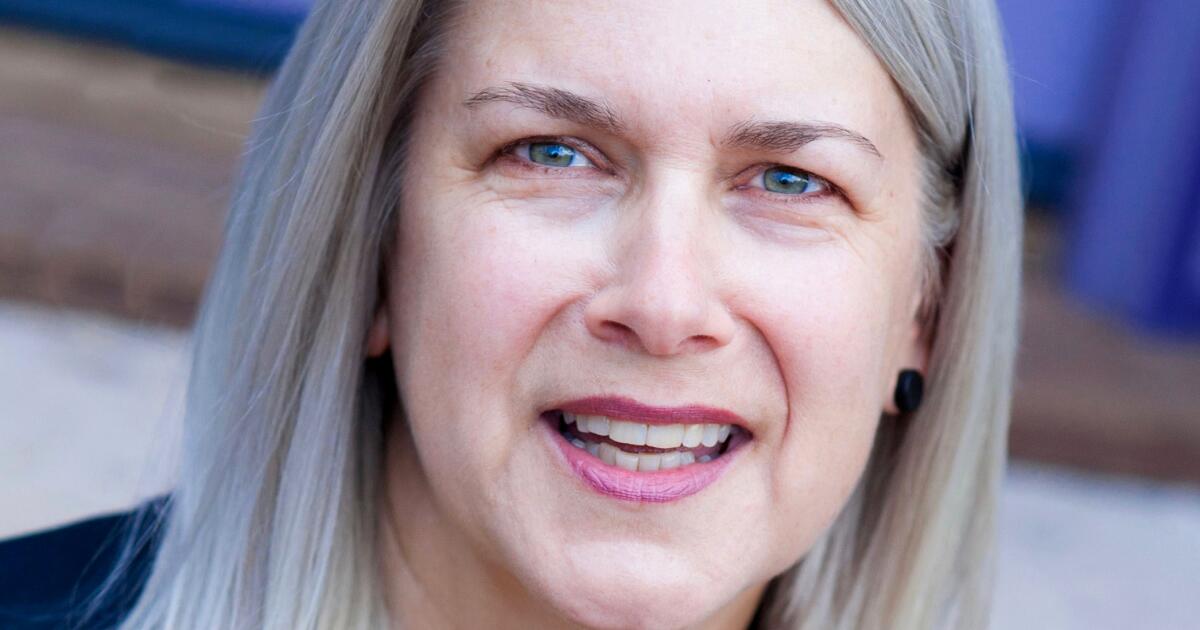At one point in Lydia Millet’s latest collection, “Atavists,” a minor character posits that people “invented time. That it was all at once and everywhere. But minds weren’t able to grasp that, so they had to divide it into sections.”
In Millet’s capable hands, those sections are 14 interconnected short stories about Southern California neighbors, colleagues and families grappling with the end of the world. Millet’s definition of the end of the world is expansive: Sometimes, the world is microcosmic and social. Other times, it’s the end of a long-held identity. Always, it’s the endangered globe.
But Millet’s deftly told tales — in “Atavists,” as in her other novels and collections — demonstrate how a narrative framework creates meaning for human life. We seek the kind of meaning that divides time into manageable fictions like eras or generations. The conceit of the short story allows Millet to show how personalities assert themselves and simultaneously explore our interconnectedness as a species.
There’s a “Waiting for Godot”–ness to these tales, each of them examining an archetype like “Tourist,” “Artist,” “Futurist” or “Optimist” in the context of the post-pandemic era. Climate change and impending catastrophe loom over every story. Millet plays with the title and with the idea of atavism, in which an ancient trait asserts itself by skipping forward a few generations to suddenly appear in the gene pool. So, too, does she reference Joseph Campbell’s work while pushing back against any simplified theology of storytelling, suggesting instead that tying ourselves to the wheel of his heroic archetype is a burden. Millet demonstrates both how the characters of our era are manifestations of older types, yet they’re also a springboard for how people will define themselves in the future. She revels in complication.
Take, for example, “Dramatist,” the second story of the series. In this story, Nick, a member of one of the two families appearing most often in the collection, is a disillusioned book-smart Stanford grad fixated on the idea that he should be writing, yet unable to put words to paper. The central tension in Millet’s work comes from the sense that we’re all doomed: She writes that “stories seemed more and more useless,” and references the old line about fiddling while Rome burns. Unsure of his creative and professional roles, Nick is living back home with his parents while he LARPs, bartends and tries unsuccessfully to write a screenplay.
Millet’s characters reflect the real trend of Gen Z students returning to the nest to save money or find their passions, providing the author with the opportunity to explore generational friction in these households. Yet here the juxtaposition of age doesn’t provide any argument that one generation is best; each age just presents a different lens for viewing.
Rather than presenting a simple binary of misunderstanding between young and old, Millet’s “Tourist,” the tale of single mom Trudy and her son, and “Artist” and “Gerontologist,” which detail Mia’s role as a volunteer in a senior living center, demonstrate how youth isn’t ignorance, just as age isn’t an assurance of safety or wisdom. The characters in these households are often parents caught on the back foot. Their children seem rudderless, but they approach the world with more dexterity. Like Nick, perhaps one of the most world-aware characters, they are constantly seeking a peaceful reckoning between their creative impulses and the darkness of the world they’ve inherited. Nick is aware of the world’s ridiculousness, and he’s tortured about it.
Mia is one of several young adults in “Atavists” who demonstrates creativity in doing: Her art is to serve as an ambassador from the new world to the old. She starts by helping seniors with their phones and expands her role into many, many examples of helping them survive by retaining dignity. Millet wants us to consider whether we’re consumers or creators at heart.
“Atavists” focuses on social acuity and awareness, but also how our baser natures exert themselves today: Trudy obsesses over an old friend’s posts on social media. A scorned woman sneaks into a past lover’s house to mess with his mind. Tech-bro jargon invades stories that focus on trust, and Buzz, a father in another of the two families at the heart of these stories, peeks into the browser history of his daughter’s husband while he contemplates major changes to his own life. “Atavists” bounces from one home to the next. Sometimes these characters aren’t sympathetic, but that’s hardly the point. They’re inventions of character, against type, and of how our lives rebound off one another.
There are perks: Nick and his sister grow closer through technology: “So now she felt closer. Though farther away,” as the characters find connection over FaceTime. Trudy’s son Sam is at ease with his friends in a virtual realm. While older characters lament a loss of connection, efforts to bridge technological divides demonstrate how cross-generational bonds are possible. All of these people feel the “sadness of wanting. The sadness of hope,” yet there are solutions. If the world outside is doomed, there’s great affection in these stories and in finding each other, along with great awareness of what it means to be a neighbor or a regular customer — or even a viewer of someone else’s life on social media.
Maybe we’re “all waiting for something that never comes,” thinks Helen, Mia’s mother, in “Optimists.” “A sign, maybe. Written across the sky by a thousand jet planes. In synchronicity. And once we see it, well, then we may do something.”
Stories are the sign. “Atavists” begs us to keep reading.
Partington is a teacher in Elk Grove and a board member of the National Book Critics Circle.

